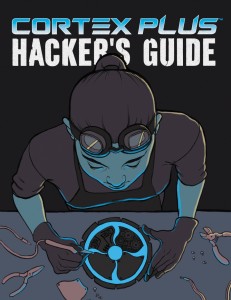
It’s about two weeks until GenCon, where we’ll launch the Firefly RPG. The logistics of managing personnel, working on the corebook, discussing system elements like Assets and Complications — on top of planning a convention — has slowed my writing to about 25,000 words these past few weeks. The majority of that was game-related.
Now, I needed that downtime because Gaming in the ‘Verse: GenCon 2013 Exclusive (all 272 pages of it) was developed and polished in a few months. We all put ourselves through the ringer for this book and it has turned out beyootifully. Yes, it *is* finished. Laid out, approved by Fox, in PDF/print formats and is now in Indianapolis. (My other GenCon plans, to set up panels and the like for Onyx Path and for my portion of the Writer’s Symposium, were completed months ago. Last year, I was pushing the deal forward for John’s new game ROFL! from Cryptozoic. That game is debuting this year at GenCon, too.) And this week the heavy lifting on the Firefly RPG corebook began as well — and that’s just games!
All this productivity, all this writing, does not remove one of the most important components in game design — playtesting. With everything that was going on, I got stuck when I was working on my Echoes of War adventure, “Friends in Low Places.” My story takes place in a town called Serenity View on the planet Hera. Now, the Cortex Plus system offers a lot of flexibility to take the adventure in a direction you prefer. At the same time, the five-act adventure structure offers crucial beats for the plot.
With that in mind, there were specific things I wanted to see when I playtested the adventure:
- Where did the tissues between Acts rip apart?
- Were the beats accurate?
- How did Timed Actions affect the tension?
The basic structure (e.g. the beats) and the characterization was solid, with the exception of the third act, which I ended up changing to better facilitate the development of the mystery. The connective tissues, however, were the weakest part. I needed to add in setting that allowed the players to explore Serenity View and find more clues.
And added I did! In addition to the cast of five characters who shape this adventure, there are fourteen smaller locations and twenty to thirty minor characters. This is the connective tissue, the ability for players to interact with the story on a deeper level by exploring this new part of the ‘Verse. This is where the game takes place and, though some may call it “fluff,” I’ve always felt that having a fully-fleshed out environment is part of the game experience. If I didn’t provide that here, then the GM would have to create that, so I did. Now, I don’t assume that every GM will use all aspects of the town. My role is to provide more than enough ideas for two or three sessions of play, knowing that most GMs will tweak the adventure to their liking.
Anyway, this is part of the reason why I feel playtesting is so important. The adventure and rules could be solid, or the setting could be there, or a rule could be inappropriate — but on paper you may not realize where your errors are until you play through it.
Oh… And Timed Actions? *Great*!!!!
- Mood: Countdown time!
Caffeinated Beverages Consumed: NOT ENOUGH.
Work-Out Minutes Logged Yesterday: Grrr…
In My Ears: Doctor Who Re-Watch to Sooth the Nerves
Game Last Played: *coughs* Candy Crush. Still. Crap times two!
Book Last Read: Magician King Re-read
Movie Last Viewed: Pacific Rim
Latest Artistic Project: *Still* *still* *still* need to take pictures… It’s on the list!
Latest Fiction Release: “The Button” We Are Dust anthology
Latest Game Release: Wedding Planners Classic Set
What I’m Working On: July 2013’s Progress Report










